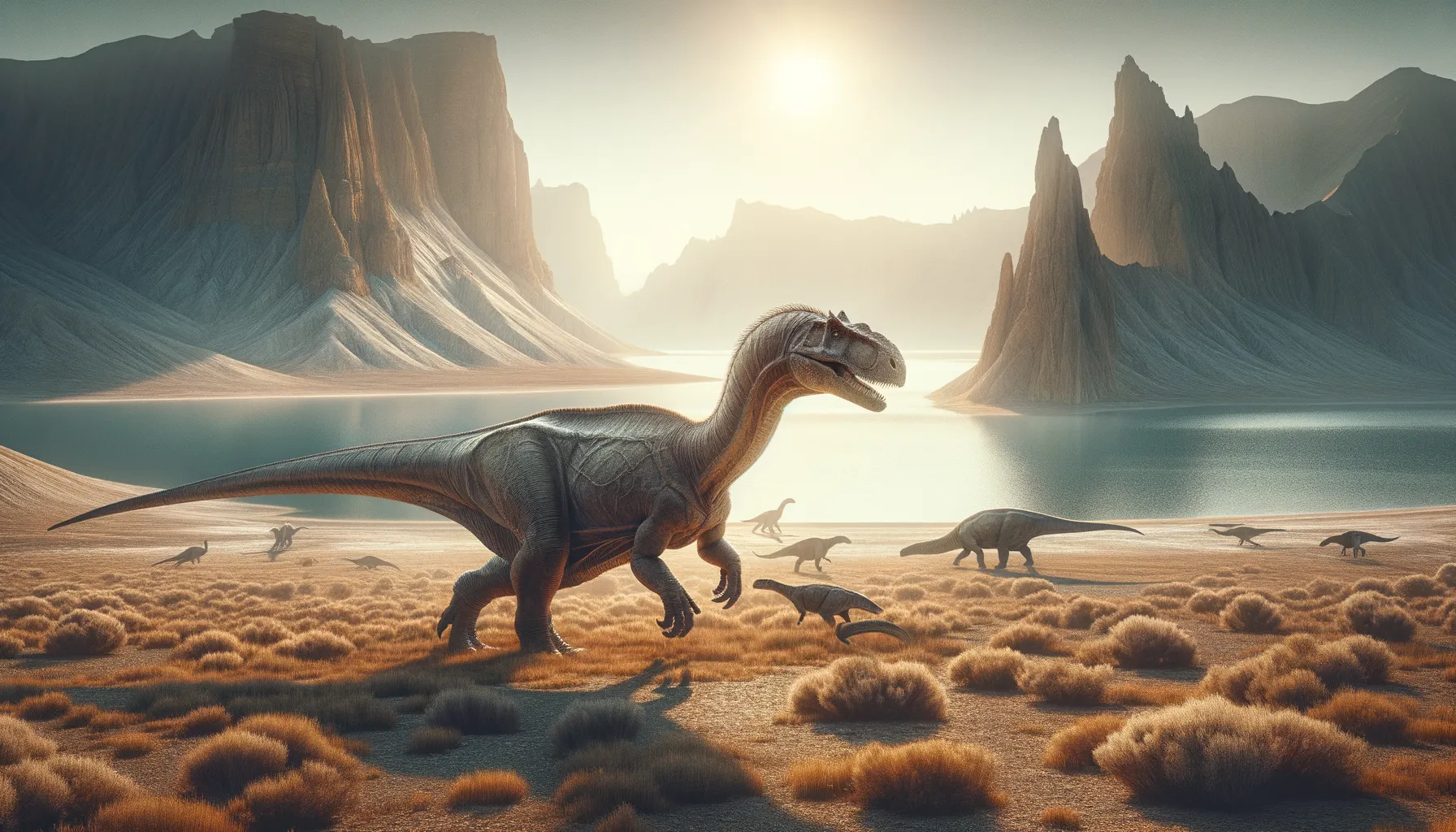
Damalasaurus
Swift predator of the Jurassic age!
Period
Jurassic
Length
Measured about 25 feet in length.
Height
Around 10 feet tall.
Weight
Approximately 2 tons.
Damalasaurus was a formidable theropod dinosaur that roamed the lands during the Jurassic period. Known for its impressive speed and agility, this predator was a fearsome hunter. Its streamlined body and powerful legs enabled it to chase down prey with relative ease. Despite its intimidating appearance, it had a complex social structure and may have interacted with its own kind in fascinating ways. Fossils primarily found in the Gobi Desert provide a glimpse into its past.
Diet
Damalasaurus primarily fed on smaller dinosaurs and mammals. Its diet might have also included carrion, which it scavenged occasionally. As an apex predator, it needed a significant amount of food to sustain itself.
Hunting
This dinosaur used its speed and agility to ambush prey. It likely hunted in open areas where it could sprint towards its target swiftly. Once it caught up to its prey, it used its sharp teeth to deliver a fatal bite.
Environmental challenges
Damalasaurus faced a variety of environmental challenges, including climate fluctuations and volcanic activity. These events could alter the landscape and resources available to it. Competition for food was another major challenge, especially with other large predators nearby. Adaptability was essential for its survival in such a dynamic environment.
Speed
Fast runner for short distances.
Lifespan
Could live up to 30 years.
First discovery
Discovered in the Gobi Desert in the early 1980s.
Fun Facts
- Damalasaurus was a herbivorous dinosaur that lived during the Middle Jurassic period.
- It was first discovered in the vast and mountainous regions of Tibet.
- The name Damalasaurus translates to 'Damala lizard,' named after the place near its discovery site.
- This dinosaur is believed to have been a medium-sized sauropod, characterized by a long neck and tail.
- Fossils of Damalasaurus include vertebrae, giving researchers insights into its size and structure.
- Its existence helps scientists understand the diversity and distribution of sauropods in the Asian continent during the Jurassic era.
Growth and Development
Young Damalasaurus likely grew rapidly, reaching near adult size in just a few years. This quick development helped it avoid predation by other dinosaurs. The growth rate might have slowed as it reached adulthood, allowing it to focus energy on reproduction. Like many dinosaurs, its growth rings in bones provide insights into its life stages.
Habitat
Damalasaurus lived in what is now the Gobi Desert, which was a diverse environment during the Jurassic. Its habitat included open plains and forested areas, offering both hunting grounds and cover. Water sources, such as rivers, were vital to its survival, providing hydration and attracting other animals it could prey upon.
Interaction with other species
Damalasaurus may have encountered other large theropods, leading to both competitive and territorial interactions. Smaller dinosaurs and mammals would have been part of its food chain. In its ecosystem, there were also likely mutualistic relationships, offering benefits such as protection or food location between different species.
Natural lifespan
Their natural lifespan was around 25 to 30 years.
Reproduction
Breeding season might have been during temperate periods, ensuring offspring had a higher chance of survival. Females likely laid eggs in nests, possibly guarded by one or both parents. Hatchlings depended on adults for protection until capable of fending for themselves.
Social behaviour
Damalasaurus may have exhibited some social behavior, hunting in small groups to capture larger prey. Communication among individuals could have occurred through vocalizations or body language. This social structure might have also helped in raising offspring by providing group care.
Fossil locations
Fossils of Damalasaurus have predominantly been found in the Gobi Desert. These fossils provide insights into its physical structure and lifestyle. Other possible fossil locations include neighboring regions where similar environments existed during the Jurassic.
